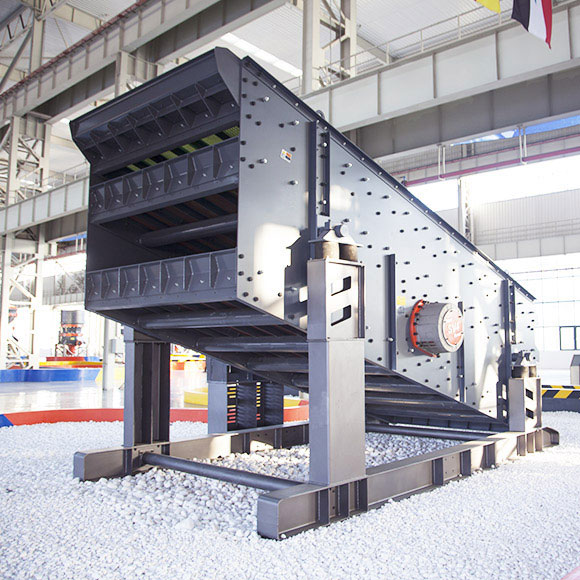Sandstone aggregate screening equipment refers to the machines used to separate and sort different sizes of sandstone aggregates during the screening process. There are several types of sandstone aggregate screening equipment available in the market, each designed for specific purposes. In this article, we will discuss some of the most common types of sandstone aggregate screening equipment.
Vibrating screens: Vibrating screens are the most commonly used type of sandstone aggregate screening equipment. They consist of a screen deck that vibrates at high frequencies, separating the sandstone aggregates by size. Vibrating screens come in various shapes and sizes and can be customized based on the needs of the user.

Trommel screens: Trommel screens are cylindrical in shape and rotate slowly while the sandstone aggregates are fed into them. The rotation action separates the different sizes of aggregates, with smaller ones falling through the holes on the screen while the larger ones remain on top. Trommel screens are ideal for use in wet environments since they prevent clogging and blinding of the screen.
Inclined screens: Inclined screens are designed to operate at an angle, allowing gravity to assist in the separation of the sandstone aggregates. They are commonly used in applications where large volumes of aggregates need to be processed quickly.
Horizontal screens: Horizontal screens are similar to inclined screens but are designed to operate horizontally. They are commonly used in applications where the feed material is dry and free-flowing.
High-frequency screens: High-frequency screens operate at a higher frequency than standard vibrating screens, allowing them to screen finer particles of sandstone aggregates. They are ideal for use in applications where the end product requires a high level of precision.
There are several types of sandstone aggregate screening equipment available in the market, each with its unique features and benefits. Choosing the right type of equipment depends on several factors, including the nature and size of the feed material, the required end product specifications, and the operating conditions. It is essential to evaluate these factors carefully before selecting the appropriate equipment to ensure optimal performance and efficiency.
